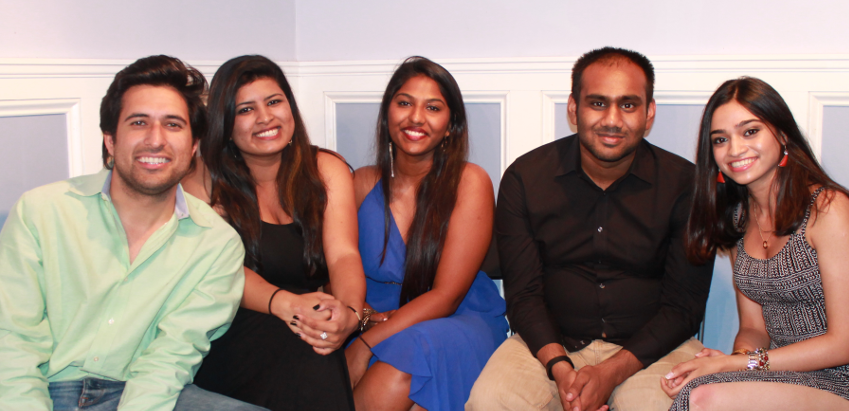
by BG Staff
CXC Productions is a new-age film production company that started in New Jersey by Rome Chopra. Rome, being an actor himself, realized that making content is unique and personal in comparison to following the traditional route.
Culture and Creativity Productions’ mission is to provide a platform for the second generation South Asian-Americans to showcase their talents and passion. The production house is gearing up to present their upcoming short film, “Now and Then,” directed by Mohitha Sripathi.
CXC Productions promotes those who are “InBetweeners.”
But what’s an “Inbetweener?”
Being an InBetweener is a real social identity. In our generation, the concept of balance has been stressed and heavily emphasized. The question that is always rolling through an InBetweener’s mind is:
“Will I ever find the perfect balance between doing what I love and sticking with my ‘safe’ career?”
Earlier this year in March, CXC Productions held an event inviting all InBetweener’s in the tri-state area to launch this new movement. In addition to hosting an event that gave a platform to speakers that relate to struggle and excitement of being an Inbetweener, the team used this opportunity to talk about the upcoming short film, “Now and Then.”
Check out the trailer below:
Producer and founder of CXC Productions, Rome Chopra, said, “Now and Then’s characters and storyline touch upon this concept of second generation discovery. You could say it’s a problem for some of us, who are multi-talented, but are asked to focus on only one talent and in the end we wonder which path is better.”
CXC Productions and the entire “Now and Then” team feel proud to support and encourage the act of being an InBetweener. Both teams want to not just recognize a single talent, but actually the many talents each individual holds.
“Now and Then” is a passion project because the team is made up of professional and aspiring artists between the ages of 13 to 55 years old, who have teamed together to create their own opportunity to showcase their talents. A lot of these talented artists fall under the InBetweener movement, such as our lead actress Vidula Mungekar. Vidula is an occupational therapist by profession and still makes time to aggressively pursue her acting career traveling abroad and locally with a Marathi theater troupe.
Vijay Adireddy, the associate and line producer of “Now and Then,” works at BNY Mellon in the IT department and is a father of two. Yet, Vijay finds time to be an established filmmaker. He has won multiple awards at a variety of film festivals and also acts as a mentor for the first time filmmakers on the sets of Now and Then.
To learn more about the film and its fundraising campaign, check out their Indiegogo page.
In addition, the young professional executive team—Nidhi Jain, Satya Adusumilli and Shreya Srivastava—is made up of recent graduates who are pursuing their filmmaking aspirations while balancing their first full-time jobs and/or academic goals.
The hundred-plus film crew has enjoyed being part of this Indian cinema-inspired film and has allowed for an educational platform for all the debutantes. While making this family film, a new family was formed with the entire cast and crew. The under-an-hour short film consists of two dance numbers and a romantic song, mixed in with family drama, laughter, and a beautiful story, all of which has been an unforgettable experience for the entire cast and crew.
“Now and Then” plans to submit to various niche and mainstream film festivals both within the United States and abroad in 2016. They are currently in the post-production stage.
CXC Productions wants to be the creative platform to help InBetweeners go after their passion and simultaneously create a unique network of artists who understand the balancing act. They believe that where there is determination, there is a way!




